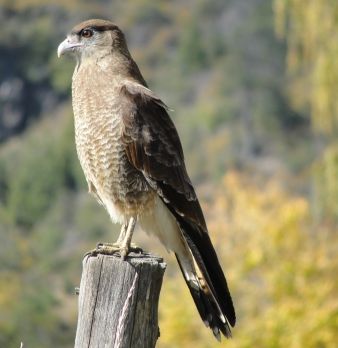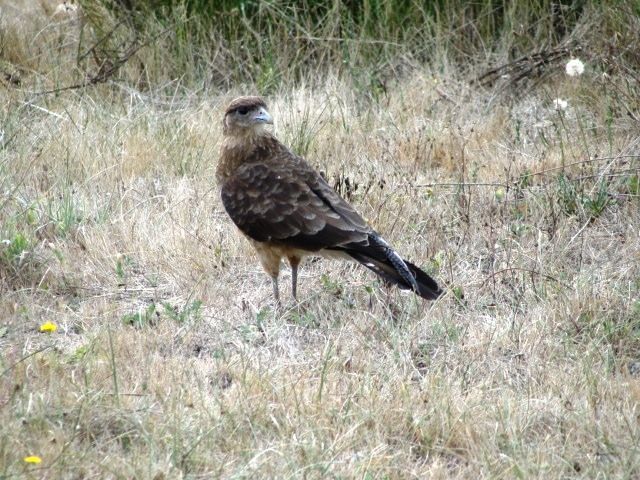
Publisher:
Bonnie King
CONTACT:
Newsroom@Salem-news.com
Advertising:
Adsales@Salem-news.com

~Truth~
~Justice~
~Peace~
TJP
Jul-28-2010 23:29

 TweetFollow @OregonNews
TweetFollow @OregonNews
Chimango Caracara, Milvago Chimango, Chimango
Gail Parker Salem-News.comThe several subspecies of chimango caracara occur throughout much of southern South America and are found in parts of Chile.
 Chimango Caracara photos by Gail Parker |
(PATAGONIA, Argentina) - The chimango caracara is actually a falcon. Despite its great numbers, little is known of this raptor, which is common in southern South America.
It seems to occupy a similar niche as the Oregon crow, opportunistically eating carrion alongside roads, gleaning scraps near garbage dumps and following plows. It also consumes worms, insects and their larvae, small birds, mammals, reptiles and amphibians.
The male measures 400 mm, the female 420mm in length. (15”) Sexes are colored and marked the same. The eyes are brown; the beak a light blue-gray. And actually, this blue beak is probably its most remarkable feature.
Apart from the blue beak, they are a rather plain brown bird without too many distinguishing markings except for pale patches on the wings and rump.
The mantle and back are edged with cinnamon brown and white plumage. Their neck, chest and abdomen are light brown. The head is dark brown. The wings have a dark brown stripe and white in the basal half of the primary feathers. The tail is light brown with a dark brown terminal band. The shortish legs are light blue-gray. The young are similar to the adults, though more russet.
While not a great flier, the chimango is one of the best hunters... Chimangos capture prey mainly on the ground, by running and pouncing their hapless victims.
In flight. it deeply beats its wings and the ends of the primaries are observably rounded. The wing curve can be seen from below.
Chimangos nest from September to December, but mostly in October. Their nests are constructed in diverse places; trees, bushes, weeds and even on the ground, formed of twigs with the interior covered with soft vegetation, hair and wool from indigenous quadrupeds.
They lay up to five white eggs with red spots. The several subspecies of chimango caracara occur throughout much of southern South America and are found in parts of Chile, Uruguay, east and southeastern Bolivia and Paraguay, the Islas Malvinas (Falklands Islands), and extreme southeasterm Brazil.
=============================================
 Gail Parker is a writer and photographer who lives in Argentina. She and her lifetime mate and husband Eddie Zawaski, who also writes for Salem-News.com, are former residents of Oregon, Gail has a great eye for memorable photos in this unique place called Patagonia. Her observations from this amazing wonderland of nature are a fun and welcome addition to our story flow.
Gail Parker is a writer and photographer who lives in Argentina. She and her lifetime mate and husband Eddie Zawaski, who also writes for Salem-News.com, are former residents of Oregon, Gail has a great eye for memorable photos in this unique place called Patagonia. Her observations from this amazing wonderland of nature are a fun and welcome addition to our story flow.
Watch for Gail's wonderful coverage of the birds of Patagonia in future stories and photojournals here on Salem-News.com.
Articles for July 27, 2010 | Articles for July 28, 2010 | Articles for July 29, 2010
Salem-News.com:





Terms of Service | Privacy Policy

All comments and messages are approved by people and self promotional links or unacceptable comments are denied.
Estela Escalada August 26, 2012 2:07 pm (Pacific time)
Gracias Gail Parker
Estela Escalada August 26, 2012 2:06 pm (Pacific time)
Me fue de gran utilidad el sonido del chimango. Gracias Especialmente a Gail Parker
[Return to Top]©2025 Salem-News.com. All opinions expressed in this article are those of the author and do not necessarily reflect those of Salem-News.com.